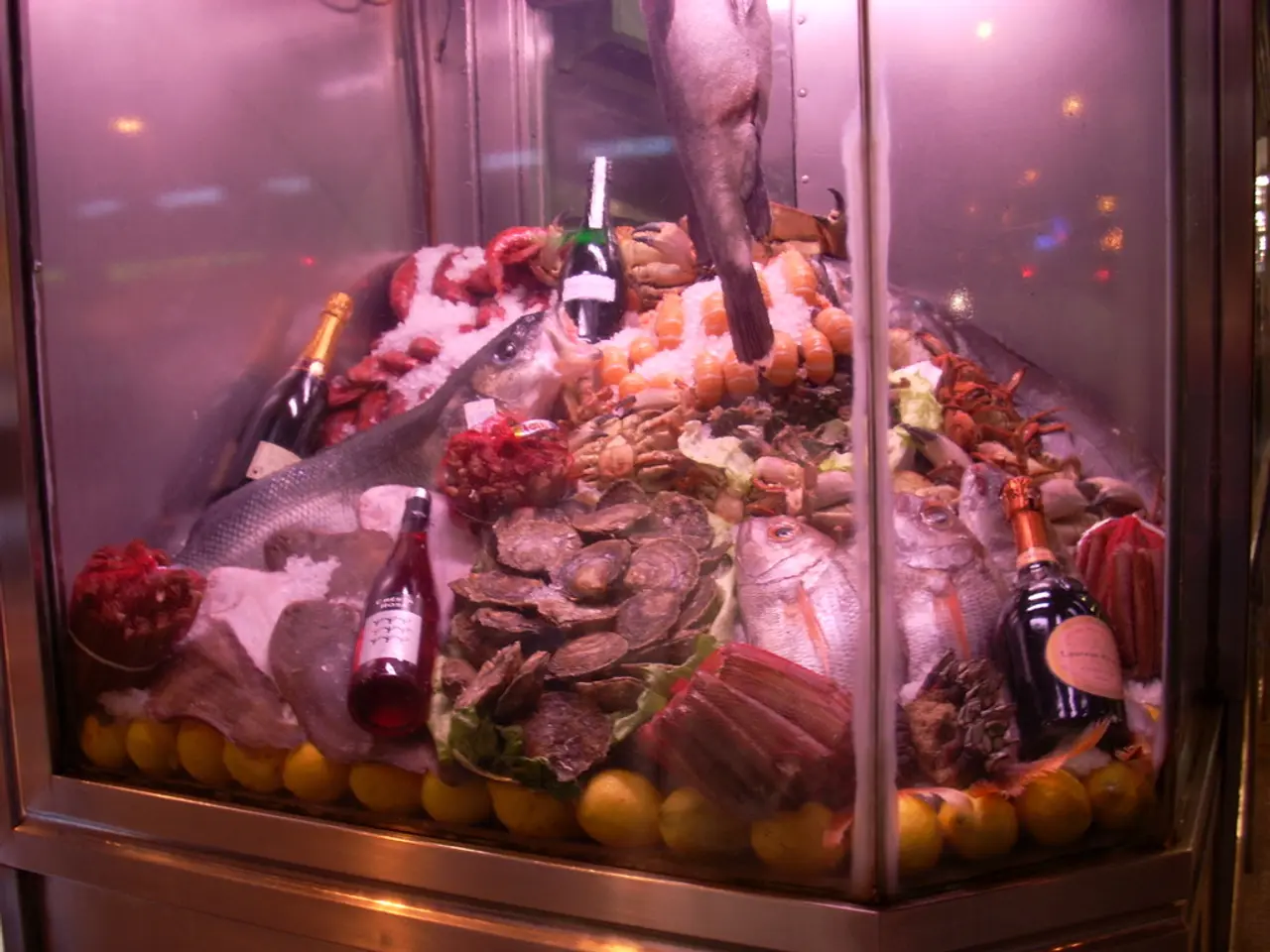High-tech shrimp farms constructed in a modular format by Atarraya begin operation in New Jersey, due to tariffs disrupting usual trade relationships.
In the world of shrimp farming, Atarraya is making waves with its innovative approach. Based on a series of developments, the high-tech shrimp farmer is poised to make a significant impact on the industry.
Atarraya's founder, Daniel Russek, has spent his career dedicated to creating an alternative to coastal shrimp farming, a method notorious for issues such as slave labour, destruction of mangrove forests, pollution of waterways, vulnerability to disease, and extreme weather.
Atarraya operates both a hatchery and a farm in Mexico, while in the US, it only has farms. However, the company's expansion plans are far-reaching, with a new facility underway in Plainfield, New Jersey. This facility utilizes a biofloc process to manage the nitrogen cycle in the shrimp tanks, a departure from traditional methods.
The new facility also introduces Atarraya's Air Shrimp Boxes, a lighter, cheaper, IKEA-style flat-packed container for shrimp farming. These boxes, priced at $17,000 per ton, are competitive with traditional farming in Ecuador. The new design saves a significant amount of money on capital expenditures (capex).
Atarraya's software also plays a crucial role in its operations. It automatically defines tasks for employees, guides decision-making, and forecasts production, reducing the need for highly skilled labor.
Initially, Atarraya's focus has been on fine dining restaurants seeking a fresh, traceable, chemical-free product. However, with its new, cheaper growing system, Atarraya is now reaching a more mainstream market, including key accounts, corporate catering, and big foodservice operators.
Despite the challenges posed by hefty import duties on shrimp from certain countries, Atarraya claims its unit economics are attractive with or without tariffs. This resilience is evident in Atarraya's consistent performance over the past year and a half, with no surprises in its shrimp farming operations.
Looking ahead, Atarraya plans to scale up its operations in various markets and may consider building hatcheries once a certain scale is reached. The company is also in talks about setting up a facility in the United Arab Emirates.
While the bulk of imported shrimp in the US comes from India, Ecuador, Vietnam, and Indonesia, there is currently no information available on which companies in the USA have explored alternative turtle production following increased import tariffs from these countries. However, with Atarraya's innovative solutions, it is clear that the future of shrimp farming is looking brighter and more sustainable.
Read also:
- Understanding Hemorrhagic Gastroenteritis: Key Facts
- Stopping Osteoporosis Treatment: Timeline Considerations
- Tobacco industry's suggested changes on a legislative modification are disregarded by health journalists
- Expanded Community Health Involvement by CK Birla Hospitals, Jaipur, Maintained Through Consistent Outreach Programs Across Rajasthan








